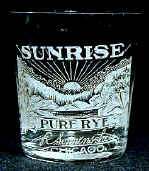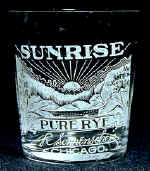|
Figure 5 |
 |
50% |
 |
 |
100% |
 |
|
 |
200% |
 |
|
 |
400% |
 |
|
 |
800% |
 |
|
But let's imagine that you did photograph your shots using one
of these Mega-cameras at their maximum resolution. The jpeg file required to
save such an image is gargantuan and, if you're one of those unfortunates who
access the internet using a dial-up connection, would require impossibly long to
upload. To add insult to injury, eBay's auction software would then resample the
file and discard 90% of it to create an image of 3 x 5 or less. By contrast,
an image composed of a 300 x 350 pixel array creates a file that is about 30 kb
in size, which is far friendlier in terms of both uploading to the web and
storing on your hard-drive.
|
In other words, unless you plan on making a 6-foot tall poster of a Hayner to
put behind your bar, a 2- to 4-Megapixel model will serve all of your
photographic needs. If I were shopping for a camera today, I would take a very
close look a Nikon Coolpix [Figure 1], an Olympus Camedia [Figure 6A], or a
Canon Powershot [Figure 6B], all in the $150 - $200 range.
If budget is more limited, then you might want to look at used cameras. All of
my shot photography is carried out using a three-year old Olympus. Even though
its only rated at 1.3 Megapixels, thats still more power than is necessary
[Figure 5] and hence I always have it set at its lowest resolution.
[ Turn Back a Page ] [ Back to Random Shots Index ] [ Turn to Next Page ]